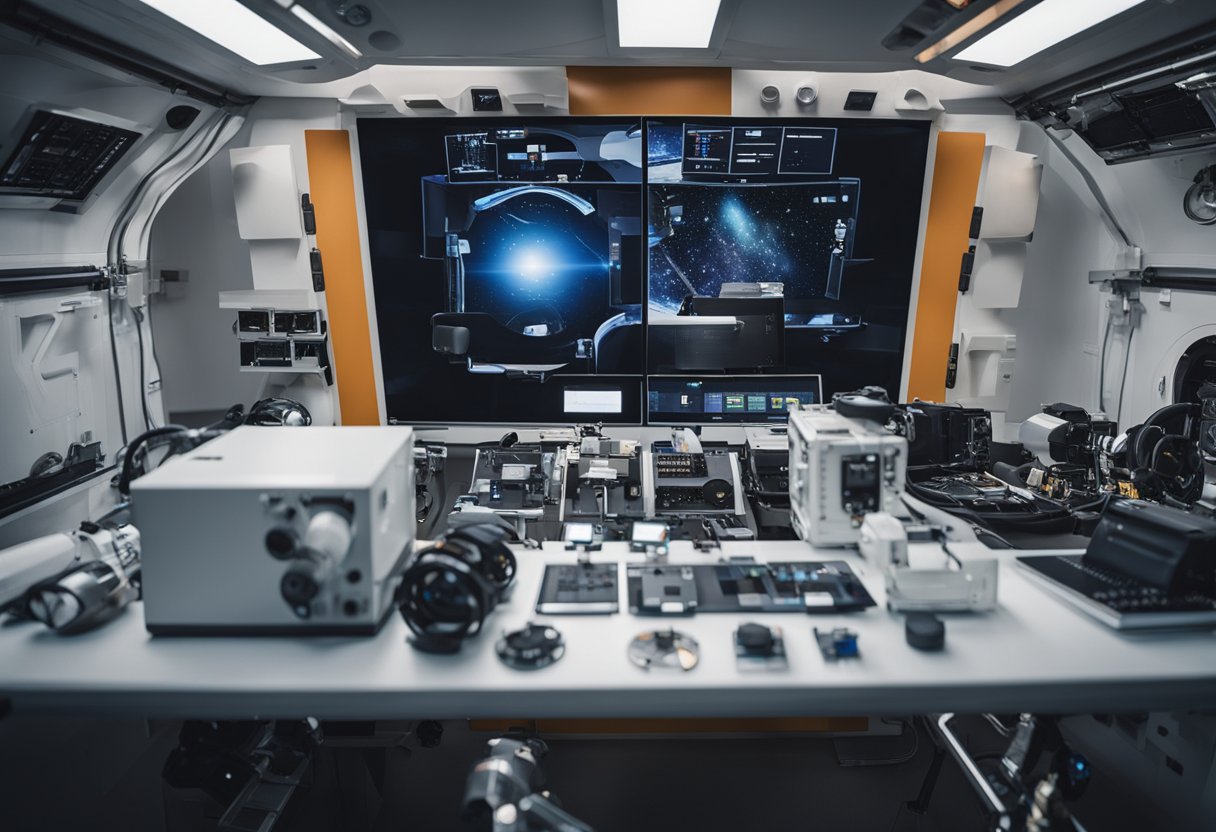
As we move further into the 21st century, the realm of astronaut training has seen significant advancements, reflecting the changing nature and increased complexity of space missions. Our understanding of the challenges posed by space exploration has deepened, necessitating a more elaborate and sophisticated approach to preparing astronauts for their endeavours. From the early days of space travel, astronaut training has evolved from basic physical tests and aircraft flights to a comprehensive regimen that prepares them for longer missions, intricate spacewalks, and unexpected challenges in the vastness of space.
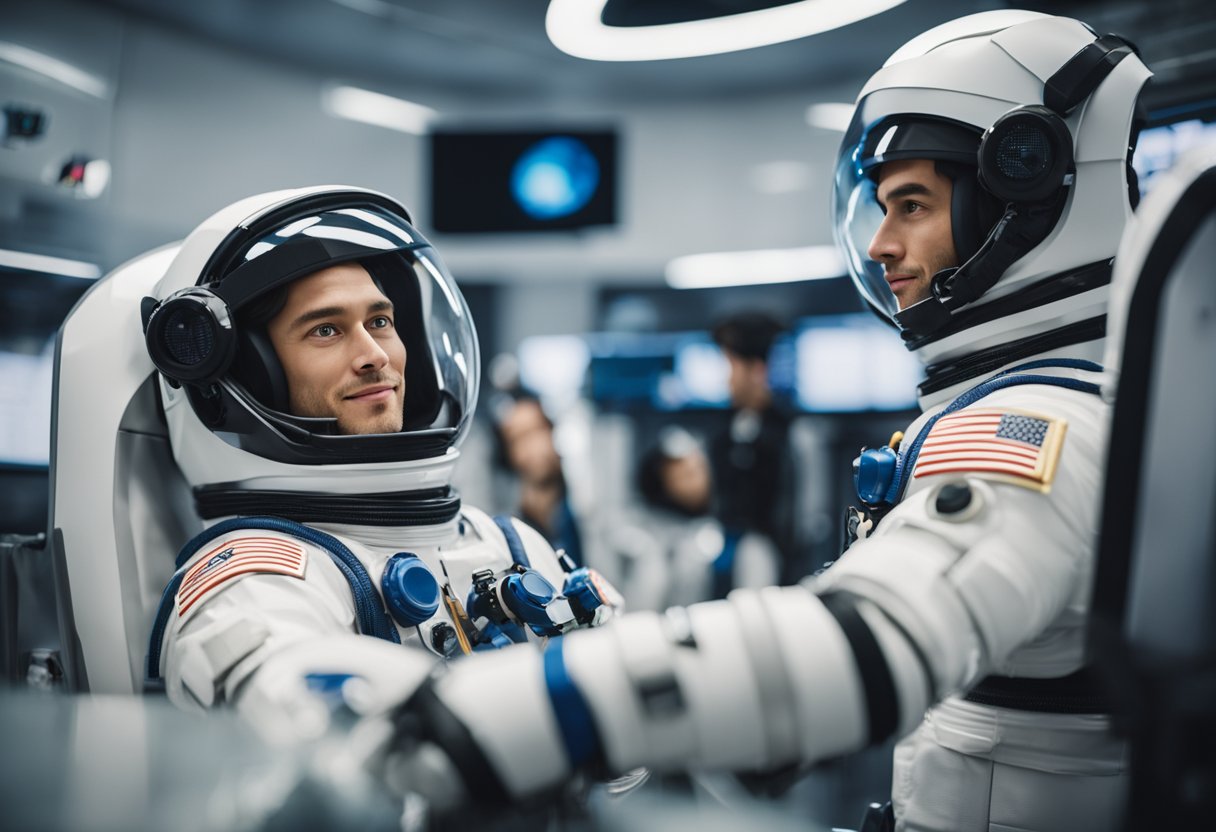
Innovation in astronaut training now incorporates virtual reality simulations, high-intensity workout programs, and extensive technical education. NASA’s commitment to fine-tuning the preparation process is evident in their use of hardware-in-the-loop simulations to create environments that mirror the harsh conditions of space. Additionally, with the advent of private spaceflight companies and the progressive development of space tourism, there is a broader range of skills and knowledge astronauts must acquire to adapt to commercial spaceflight demands.
The journey of astronaut training has undergone significant transformation since the mid-20th century, evolving with each mission’s specific requirements and adopting new technologies.
Our initial steps into space with the Mercury and Gemini programmes laid the foundation for contemporary astronaut training regimes. During the Mercury programme, astronauts focused on learning spacecraft systems, basic science, and survival training. These programmes also introduced the concept of high-stress simulations to prepare astronauts for the exigencies of space travel. Our training techniques were crucial during these early flights, as astronauts like John Glenn orbited the Earth, piloting with primitive guidance systems compared to today’s standards.
The Gemini programme expanded on Mercury’s groundwork, emphasising spacewalking skills and spacecraft rendezvous techniques—essential tasks for the upcoming challenges of the Apollo missions. This era marked the critical transition from individual short-term flights to complex team-based operations.
The Apollo programme’s monumental challenge to land humans on the Moon necessitated yet more sophisticated training. Our astronauts trained extensively in geology to enable them to conduct scientific explorations and collect lunar samples. Simulated lunar surfaces and advanced simulators at facilities like the Johnson Space Center became our tools to help future Moonwalkers, like those on Apollo 11, prepare for their historic tasks.
With the dawn of the Space Shuttle era, our training methodologies further diversified to include the operation of a reusable spacecraft and conducting a myriad of science experiments in orbit. We incorporated learning modules for deploying and repairing satellites and constructing the International Space Station (ISS). Here, the Astronaut Corps mastered the art of prolonged spaceflight, a contrast to the relatively brief excursions of prior programmes.
The conception of the ISS heralded a new chapter of international cooperation. Our rigorous training programmes began involving not just our astronauts but also international partners, creating a cohesive global Astronaut Corps. With the ISS serving as an orbiting laboratory, we introduced extensive scientific and research-based training, complemented by cross-cultural and language instruction to foster collaboration among the diverse crew members.
Current training also prepares astronauts for the potential challenges of long-duration missions and the effects of microgravity on the human body. The ISS serves both as a testament to how far our training strategies have developed and as a training ground for future explorations, perhaps to Mars or beyond.
Our evolution in astronaut training will undoubtedly continue as we look forward to collaborations with private entities like SpaceVoyageVentures.com and the burgeoning field of space tourism. With each giant leap, our expertise deepens, our techniques refine, and our horizons broaden.
In our exploration of space, selecting the right individuals for astronaut training is a critical step. NASA’s application procedures are opened during certain periods and may vary slightly by applicant’s background. Candidates must have a relevant educational background and professional experience. The European Space Agency (ESA), Canada, and Japan share similar rigours in the selection of their astronauts.
Initial Screening:
Following the primary application review, suitable candidates are invited to participate in a series of interviews. These interviews put applicants through their paces, testing not only their technical know-how but also their psychological and physical suitability for protracted missions in space.
Interviews and Assessments:
Successful candidates proceed to training at the Johnson Space Center, where they undergo a comprehensive two-year training course. Throughout the #AskNASA initiative, the public can gain insights into the training and selection process, emphasising transparency and educational outreach.
Each agency, including the Canadian Space Agency and JAXA (Japan Aerospace exploration Agency), endorses a meticulous selection process, ensuring those who advance are not just apt for current missions but also the novel challenges of future space exploration, like those documented on SpaceVoyageVentures.com.
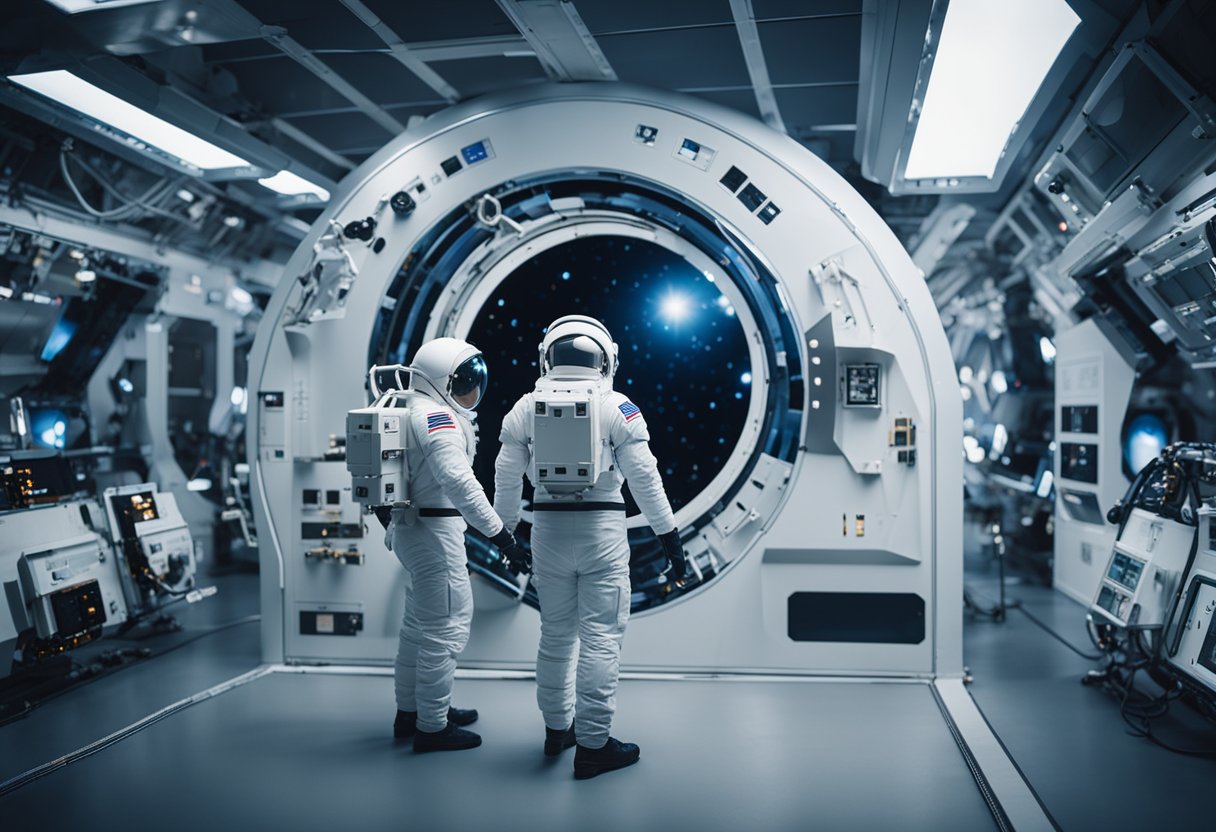
As we embark on the journey to prepare astronauts for their mission in space, we place a significant emphasis on an integrated approach to physical and mental readiness. This includes rigorous physical training and comprehensive mental health strategies to ensure the astronaut’s well-being in the extremes of space.
Our physical training regimen focuses on combatting the effects of microgravity on the body. To maintain peak physical condition, astronauts engage in strength training — targeting key muscle groups and skeletal strength. This includes exercises using resistance machines which compensate for the lack of gravity. The routine is shaped by the lessons of space medicine, with the goal of preserving muscle mass and bone density that can deteriorate in the unique environment astronauts face.
The mental health and psychological well-being of astronauts are equally vital. Strategies are devised to manage stress and to maintain robust mental health. Crew members are trained in expeditionary skills including teamwork and leadership, vital for the cohesion and effectiveness of the mission. In the isolation of space, ensuring a safe environment for astronauts to express concerns and to seek support is crucial. This, combined with routine mental health evaluations, provides a holistic mental preparation framework.
Training not only readies the mind and body for the mission but also nurtures the teamwork necessary for a successful expedition, especially in such isolated conditions. This mirrors the potential future of space tourism captured by sites like SpaceVoyageVentures.com, where these competencies are paramount for the safety and enjoyment of all space travellers.

In astronaut training, we emphasise accomplishing complex tasks that require a combination of technical know-how and problem-solving abilities. Our programmes are designed to prepare astronauts for the multifaceted nature of space missions.
Operating the sophisticated systems aboard spacecraft like the International Space Station demands a broad understanding of engineering principles. We ensure this by providing hands-on experience with actual space hardware, either directly or through high-fidelity simulations. Training includes:
The rigorous training ensures proficiency in handling spacecraft hardware and software, preparing astronauts for various scenarios they may encounter while in orbit.
Our engineering training focuses on practical skills that are vital for in-space operations, such as the manipulation of a robotic arm. Astronauts learn the intricacies of:
Direct interaction with robotic systems during training develops their ability to execute delicate robotics operations, which are crucial for the success of space missions.
Virtual reality (VR) and simulation technologies form a cornerstone in our training programmes. By immersing astronauts in simulated environments, we can replicate spacewalks and emergency scenarios without the associated risks of real space missions. These simulations entail:
These training modules are crucial as they allow astronauts to practice and refine their responses to a variety of technical challenges they will face outside Earth’s atmosphere.
In astronaut training, we equip crew members with the skills necessary to conduct cutting-edge scientific research in a unique microgravity environment. Our focus is on practical application in the fields of geology, biomedical and life sciences, and the execution of onboard experiments vital to expanding our understanding of space and its implications for various scientific disciplines.
We have mastered the art of performing experiments in the microgravity conditions of the International Space Station, transforming it into a state-of-the-art laboratory. Astronauts are trained to handle sophisticated equipment to carry out experiments that can’t be replicated on Earth. For instance, observing microgravity‘s effects on physical phenomena or biological organisms provides insights that propel medical and scientific advancements.
Our training in geology and physical science enables astronauts to understand and explore extraterrestrial terrains. The rigorous science preparation astronauts receive includes geoscience and lunar science training; they study detailed classroom-based fundamentals before conducting field training that simulates the lunar surface. This equips them to recognise geological features and collect valuable samples, broadening our knowledge of planetary geology.
In the realm of biomedical and life sciences, astronauts are instructed in medical protocols that are crucial for their health and the success of long-duration missions. They engage in research underpinning innovative cancer studies and delve into the impacts of long-term space travel on the human body. Through such experiments, researchers can develop new medical technologies and treatments, benefitting not only those in space but also people on Earth.
Before astronauts can perform a spacewalk, or extravehicular activity (EVA), they must undergo extensive training to prepare for the challenges of operating in a weightless environment outside a spacecraft. This preparation relies on sophisticated facilities and technologies that simulate the conditions of space.
At our Neutral Buoyancy Laboratory, astronauts experience simulated weightlessness, akin to the conditions they’ll face during EVA. The enormous pool houses full-scale replicas of parts of the International Space Station (ISS) where astronauts practice manoeuvres and tasks they’ll execute in space. Expert divers supervise the training sessions, ensuring safety and providing guidance. By adjusting buoyancy suits, astronauts can hover in the water, simulating the microgravity they will encounter while conducting spacewalks.
We also harness the power of virtual reality simulators to augment EVA training. These immersive environments enable astronauts to familiarise themselves with spacewalk procedures and tools without leaving Earth. By donning VR headsets, astronauts can rehearse complex tasks and emergency procedures until their responses become second nature. The synthesis of realistic visuals and controls contributes to an effective and comprehensive training regimen that prepares them for the rigours of space exploration.
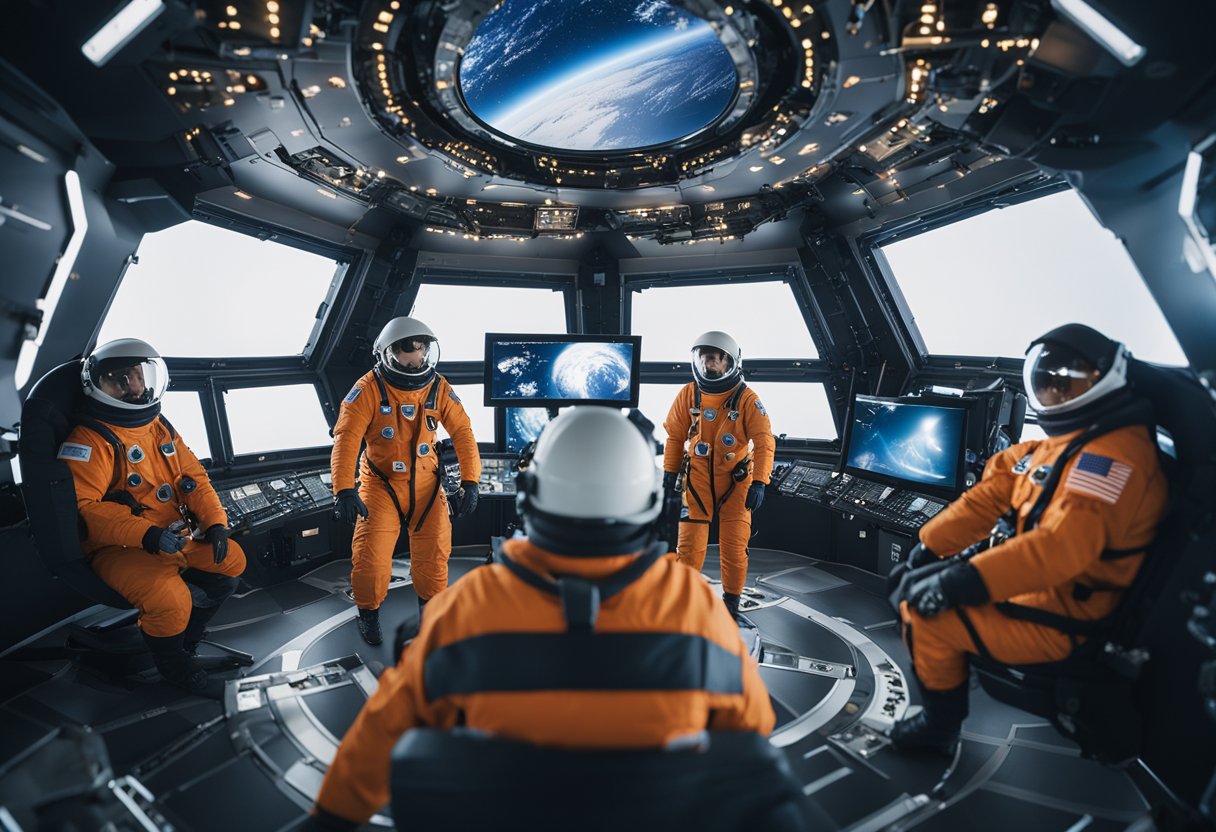
In alignment with NASA’s ambitious Artemis program, our focus has centred on developing rigorous training modules for our astronauts. Highlighting the Orion spacecraft, we’ve cultivated specialised routines for both lunar orbit and the lunar surface, ensuring each crew member is adept in navigating the delicate intricacies of moon missions.
Lunar Orbit Specifics:
Lunar Surface Operations:
We’ve leveraged state-of-the-art simulators, housed within the Jake Garn Training Facility, for a representation so vivid, it rivals the actual experience within the moon rocket. Our astronauts train in vehicle operations, preparing them for all phases of their mission—launch, landing, and payload management.
For deep space endeavours to Mars, we have extrapolated our moon mission training to suit the extended duration and the unique challenges posed by the Martian environment. Rigorous physical conditioning combined with psychological resilience training are key components of our comprehensive mission preparation.
Peruse further details on the innovative approaches to astronaut training in deep space missions on SpaceVoyageVentures.com.
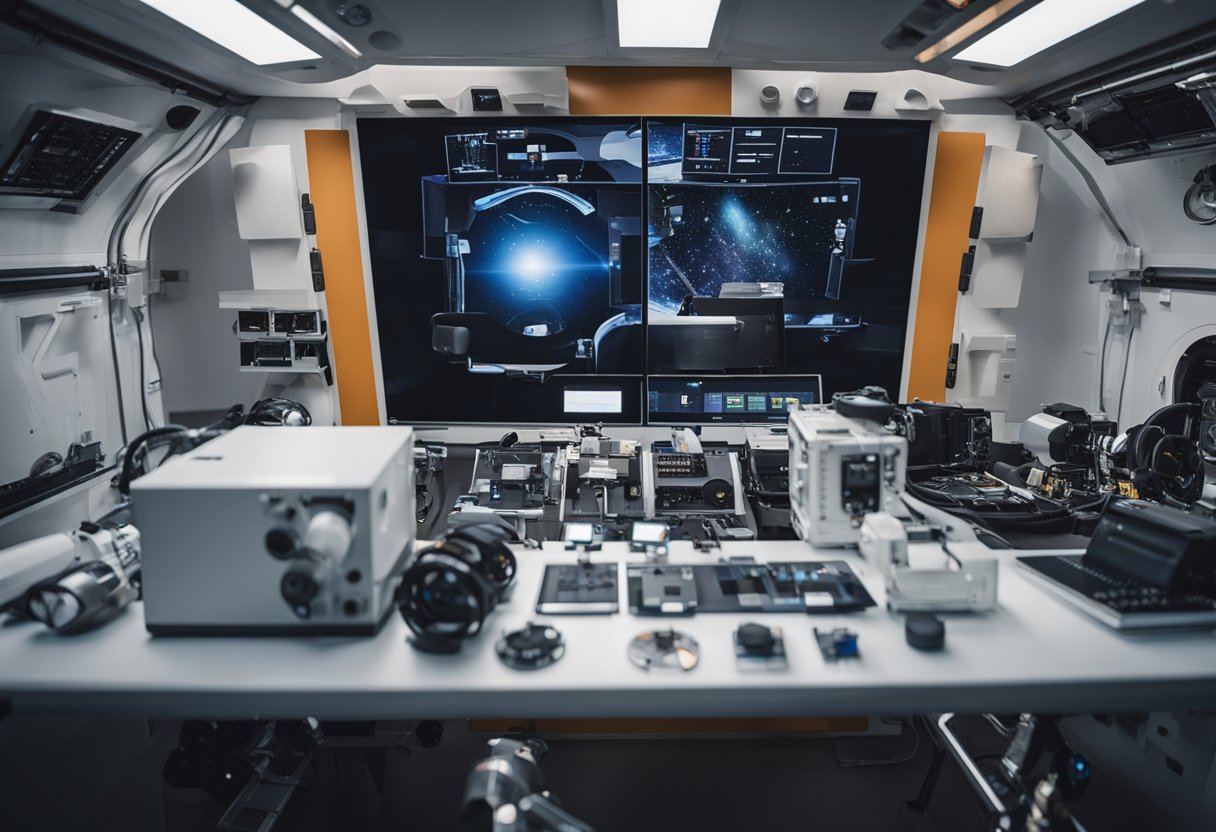
Training for missions of extended duration, such as those to the moon or on the International Space Station (ISS), has evolved significantly to ensure that astronauts are thoroughly prepared. Specific training in habitability, life support systems, and self-sufficiency are crucial for the success of these missions.
On long-duration missions, we emphasise the importance of creating a livable habitat that marries functionality and comfort. Astronauts undergo training to manage life support systems, a cornerstone of which is the Environmental Control and Life Support System (ECLSS) on the ISS. ECLSS entails managing air quality, providing potable water, and controlling thermal conditions. Mastery of these systems is crucial, as they are designed to be highly efficient in recycling resources—an essential factor in the constrained environment of space vehicles.
Survival training equips astronauts with the skills necessary to manage emergencies and sustain themselves in the event of unexpected contingencies. Our programme includes rigorous drills in medical response, repair of space vehicles, and maintenance of space suits. As future missions aim for the moon or even Mars, this also encompasses training on extravehicular activities (EVAs) and operating rovers. We’re prepping our astronaut teams for a degree of self-sufficiency that’s required for survival in off-world habitats, where immediate support from Earth isn’t feasible.
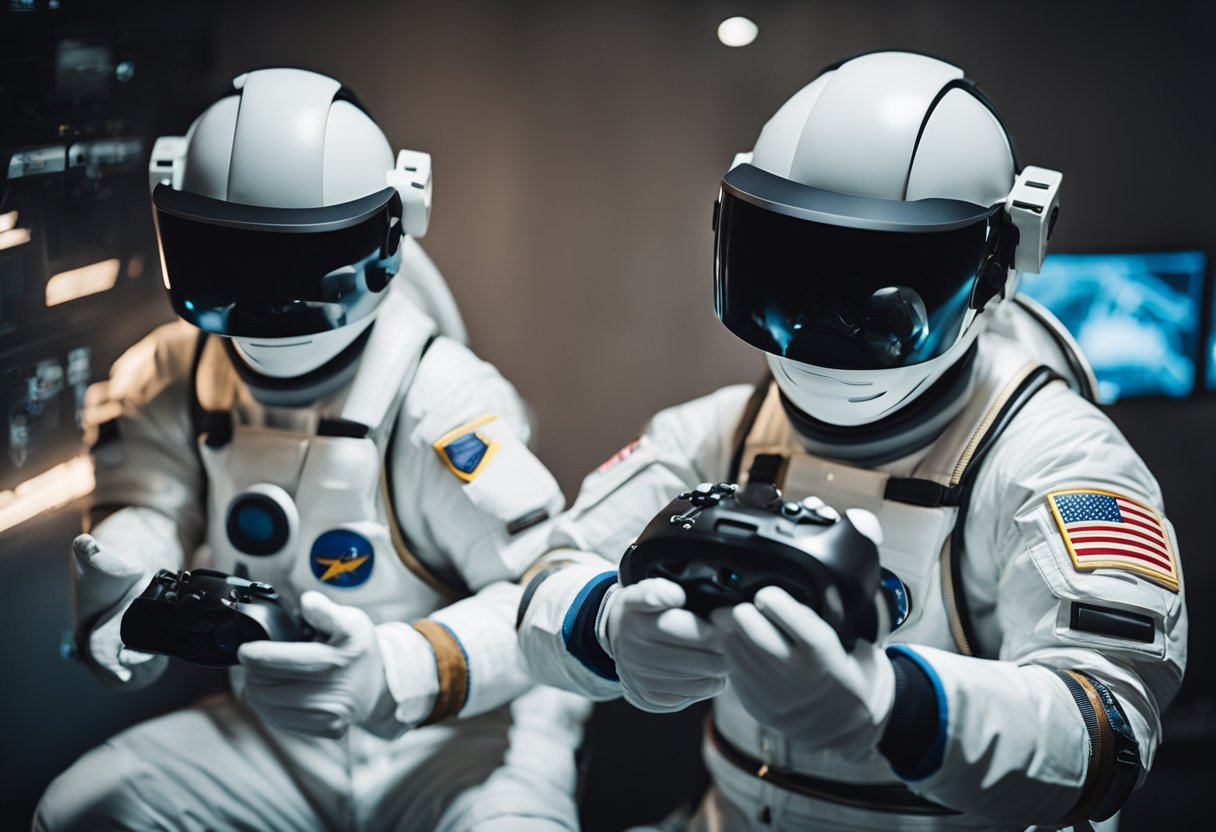
We recognise that effective communication and media interaction are pivotal for our astronauts’ training programmes. Modern advancements in these areas not only sustain public interest in space exploration but also ensure the readiness of astronauts to handle various communication scenarios they might encounter.
NASA actively promotes public engagement through various outreach activities, helping to bridge the gap between astronauts and the general populace. We take pride in orchestrating events where astronauts share their experiences and the significance of their missions using enlightening and relatable narratives.
This engagement, complemented by online platforms such as SpaceVoyageVentures.com, which platforms future tourism opportunities, allows the public to vividly imagine the reality of space travel, bridging the final frontier.
Astronauts undergo comprehensive training to adeptly handle the press and media. The media’s role in interpreting our missions for the public is crucial, and we ensure our teams are equipped to deliver accurate and clear messages.
Through this meticulous approach, our aim is to ensure accurate representation of our work and maintain transparency with the public regarding the intricacies of space exploration and NASA‘s ongoing projects.
After the successful completion of a mission, our astronauts embark on a critical phase: recovery and debriefing. This stage is essential in ensuring both the physical and psychological welfare of the crew, as well as in capturing invaluable data for future missions.
Recovery
Upon return to Earth, astronauts face the taxing task of readapting to Earth’s gravity. The body that has acclimatised to the weightlessness of space must be carefully monitored and supported through a structured recovery protocol. This includes physical therapy and regular medical assessments to manage any effects of microgravity on their bones, muscles, and overall health.
Debriefing
The debriefing process serves as both a reflective and instructive tool. Failures and successes are meticulously analysed to enhance the design and execution of subsequent missions.
Debriefing also extends beyond immediate operational performance. Insights into human behaviour and team dynamics garnered through mission review and evaluation help shape astronaut selection and training for future deep space exploration. This in-depth analysis ensures that astronaut training programs continue to evolve, incorporating cutting-edge practices that cater to the complex demands of future space endeavours.
Ultimately, the knowledge accrued from post-mission debriefing is not only pivotal for our astronauts’ wellbeing but is also shared with emerging sectors such as space tourism to assist in preparing civilians for the rigours and realities of space travel, as documented on platforms like SpaceVoyageVentures.com.
As we continue to push the boundaries of our presence in space, future prospects in astronaut training are evolving rapidly with compelling new frontiers on the horizon.
The journey towards deep space missions demands innovative training strategies. With the Artemis program, aspiring astronauts are preparing to set foot on the Moon once again, paving the way for an eventual human presence on Mars. Our training now must encompass the challenges of long-duration flights, such as the psychological effects of isolation and the physical impacts of microgravity. The complexity of operating the Space Launch System — the most powerful rocket ever built — is also a focal point of our current training efforts.
To replicate the harsh conditions of deep space, virtual reality simulations and underwater training sessions have become indispensable tools. These immersive environments allow astronauts to hone their skills in navigation, equipment handling, and emergency protocols while acclimating to the psychological demands of space.
The significance of international partnerships and collaborations in astronaut training cannot be overstated. Our work with the International Space Station has set a precedent for multinational training programmes, demonstrating that shared expertise and resources are crucial for the advancement of space exploration.
With global cooperation, the pooling of knowledge from diverse space agencies enriches the astronaut training curriculum. For example, candidates often travel to Star City in Russia for specialised training modules. Furthermore, collaborative projects like the ISS have given shape to the concept of space tourism, an emerging industry that requires its distinct form of astronaut preparation. As potential space tourists explore websites like SpaceVoyageVentures.com, we are reminded of the exciting possibilities that lie ahead in the burgeoning domain of civilian space travel.
In these new frontiers, we are tasked with balancing the tried-and-true methods of astronaut training with revolutionary techniques tailored for the extraordinary challenges of future space missions. Our goal is not only to prepare individuals for the physical rigours of space but also to foster a collaborative spirit that transcends borders, an ethos essential for the longevity of space exploration.
In our exploration of astronaut training, we’ve witnessed a significant transformation influenced by technological progress and innovative practices. Below, we discuss how these developments have carved a new path for astronaut training.
Training for astronauts has seen substantial refinement with the introduction of virtual reality. This technology simulates space environments, allowing for realistic mission rehearsals. The Virtual Reality Laboratory at NASA is a prime example, where the kinesthetic sensation of handling large objects in space is replicated.
Robotic devices and advanced life support systems, which were initially designed for space missions, are now integral to astronaut training. These technologies enhance the efficiency and safety of preparing for the harsh conditions of space.
The NASA NIAC (NASA Innovative Advanced Concepts) programme imparts futuristic concepts into current training. Although specific 2023 advancements remain under continual development, past NIAC projects have focused on areas such as biotechnology which are gradually being included in training routines.
Modern astronaut training programmes stress both technical skills and soft skills. Technical skills cover operating spacecraft and conducting scientific experiments, while soft skills include teamwork, decision-making under pressure, and cross-cultural communication.
Post-mission, NASA technology often finds new life in consumer products. Examples include improvements in software algorithms, fabric technologies, and medical devices.
Technologies such as satellite communication systems and miniaturised computing have roots in the space race and continue to shape astronaut training. Innovation in materials science and environmental control systems from that era also play a crucial role in current training methodologies.